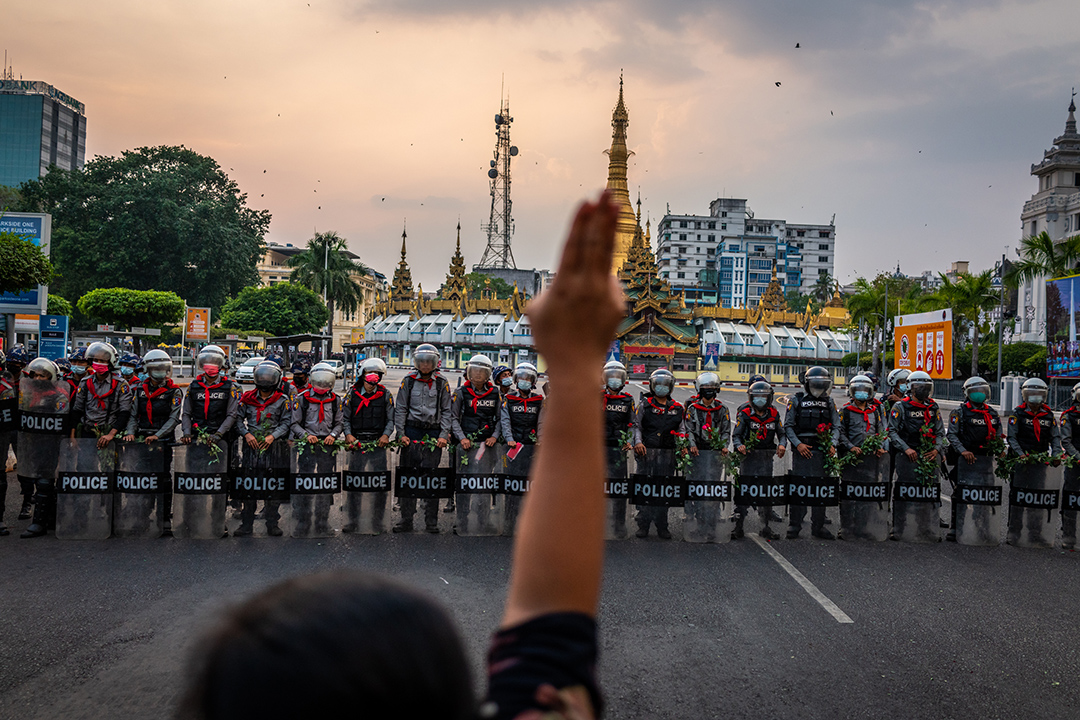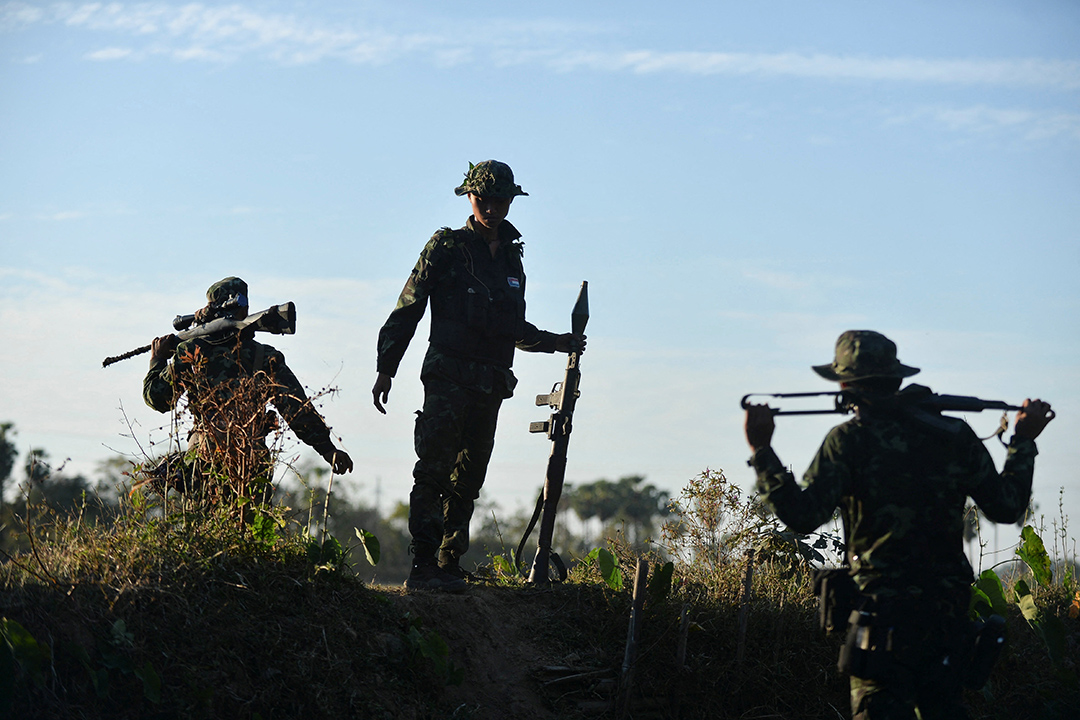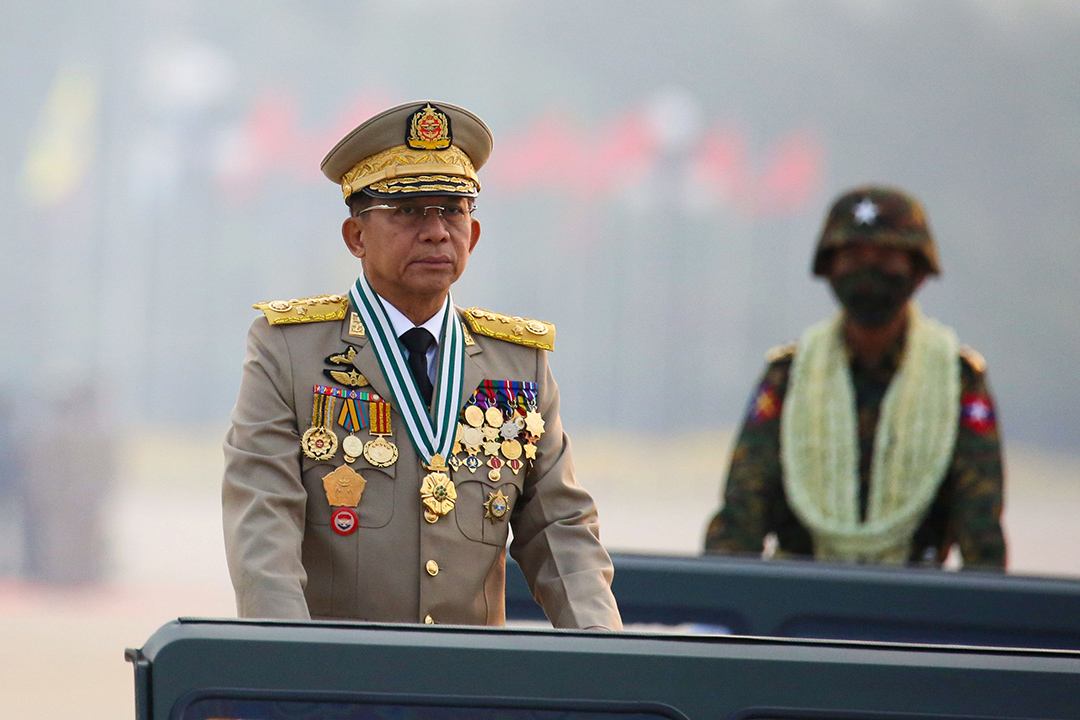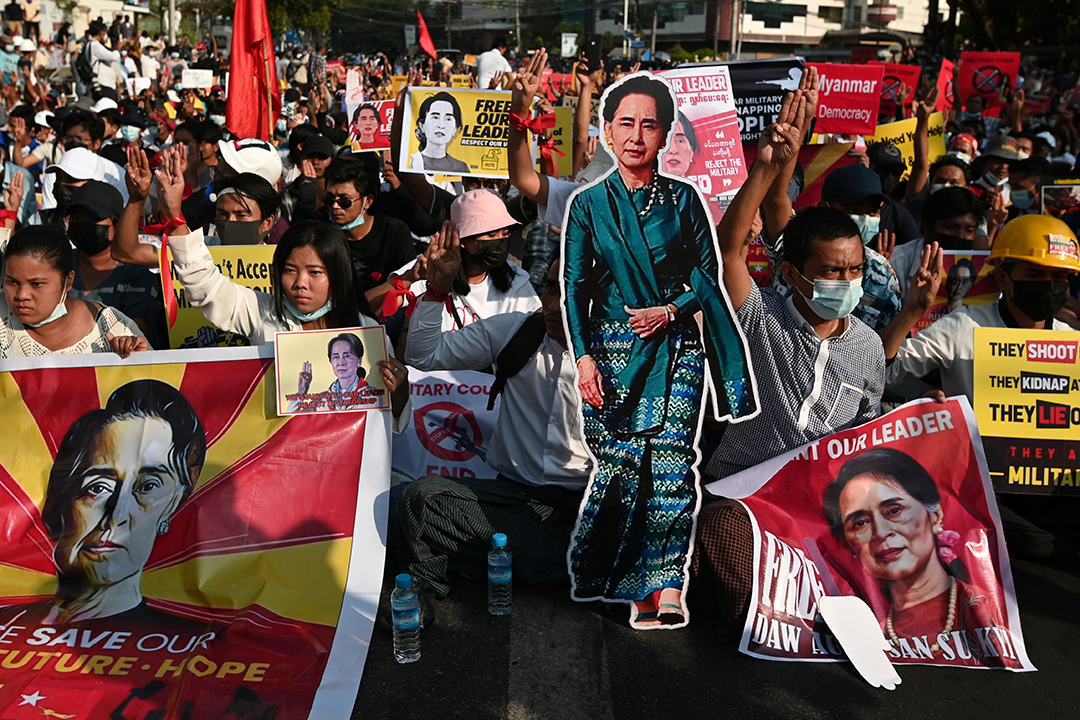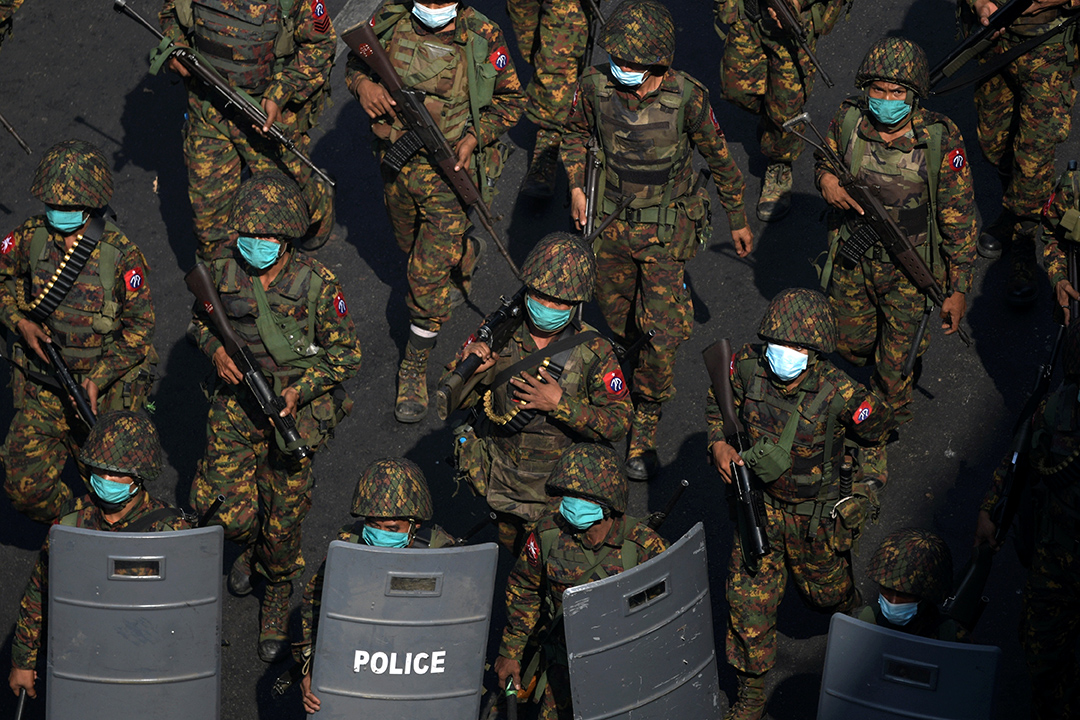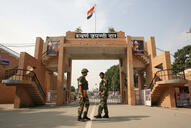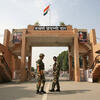In late October 2023, a coalition of three ethnic armed groups in Shan State launched a coordinated offensive against the ruling military junta, posing the strongest challenge to its rule since the February 2021 coup. A junta spokesperson said its forces were under “heavy assault” as insurgents use drones to bomb military and police outposts in eastern Kayah State, bordering Thailand; western Rakhine State, bordering India; and northern Shan State, bordering China. Amid the expansion of fighting, the United Nations reported over two million civilians have been displaced by the conflict.
Since gaining independence from British rule in 1948, Myanmar has grappled with effective governance in its multiethnic society. After a coup in 1962, the Tatmadaw, Myanmar's military, has often held control, engaging in conflicts with ethnic minority groups fighting for self-determination.
The Rohingya, a highly persecuted Muslim group numbering over one million, face discrimination both from their neighbors and their nation, and are not considered citizens by Myanmar’s government. Buddhist nationalist groups, including the MaBaTha and the anti-Muslim 969 movement, regularly call for boycotts of Muslim shops, the expulsion of Muslims from Myanmar, and attacks on Muslim communities. After two waves of violence, reprisals, and riots in June and October of 2012 intensified the century-old conflict in the predominantly Buddhist country, more than one hundred thousand Muslim Rohingyas were internally displaced and hundreds killed.
Tensions between Buddhist and Muslim communities in Myanmar's Rakhine State escalated dramatically in August 2017. A series of attacks by a group of Rohingya militants calling itself the Arakan Rohingya Salvation Army (ARSA) on military and police outposts killed more than seventy people, including twelve Burmese security forces personnel. In response, the military launched a brutal crackdown on Rohingya villages, causing over seven hundred thousand people to flee across the border to Bangladesh since August 2017. Widespread reports indicate indiscriminate killings and burning of Rohingya villages, escalating to the point that the UN Human Rights Commissioner called the situation in Rakhine State “a textbook example of ethnic cleansing.”
This outburst of violence by the military came after a similar attack on a security post along the Bangladeshi border in October 2016 killed nine police officers. The army responded to that attack with a month-long crackdown on unarmed Muslim civilians, causing more than one thousand civilian deaths and driving tens of thousands more to flee their homes in search of safety.
After winning Myanmar’s first competitive national election in more than twenty-five years and taking office in March 2016, the National League for Democracy party—unofficially headed by State Counsellor Aung San Suu Kyi—continually failed to address the status of the Rohingya people, who were not allowed to vote in the election. A national peace conference was held in August 2016, aimed at ending decades of fighting between the military and a number of armed ethnic groups, but Rohingya representatives were not invited to attend. That same month, Aung San Suu Kyi announced the creation of a nine-person commission, headed by former UN Secretary-General Kofi Annan, to review and offer recommendations to address the tensions in Rakhine. The commission delivered its final report in late August 2017, just days before the outbreak of violence in Rakhine.
In early February 2021, Myanmar’s military carried out a coup, detaining senior leadership of the democratically-elected government, including de facto head of state Aung San Suu Kyi, and forcing other members of parliament into hiding. After seizing power, General Min Aung Hlaing, the leader of the ruling military junta, instituted a year-long state of emergency. Protests immediately began in the capital, Naypyitaw, following the coup and have continued for months, with protesters demanding the restoration of civilian rule and democratic governance. Security forces have repeatedly used lethal force against protesters, including in late March when over one hundred people were killed in a single day; it is estimated that more than six hundred people have died since the protests began. The military junta also instituted curfews and other limitations on gatherings in an effort to curb the demonstrations. As a result of the coup, economic freefall has further compounded the inability for ethnic minorities discriminated against in Myanmar, including the Rohingya, to access basic services and necessities. Moreover, the current military regime in power is the same military that sanctioned and carried out waves of violence against the Rohingya in the past, including most recently in 2017. Since taking power, General Hlaing has also cast doubt on the right for Rohingya refugees living in Bangladesh to return.
Living conditions for the more than one million Rohingya living across the border in Bangladesh have continued to deteriorate since 2017, when the Myanmar military led a violent crackdown in Rakhine state, forcing more than seven hundred thousand people to flee. Today, most Rohingya refugees in Bangladesh live in camps in and around Cox’s Bazar, which is just across the Myanmar border and the largest refugee camp in the world. Rohingya refugees living in the camps are often deprived of basic services and necessities, with persistent shortages in humanitarian aid, and overcrowding has made the camps vulnerable to extreme weather. In March 2021, a catastrophic fire spread in the Cox’s Bazar camp, causing dozens of deaths and destroying nearly ten thousand shelters. The COVID-19 pandemic has also exacerbated health crises in the camps.
In late May 2021, hundreds of Rohingya living on a remote silt island known as Basan Char took part in demonstrations that were met with police violence and coincided with a visit by UNHCR—the UN’s refugee agency—from mainland Bangladesh. After the construction of crude shelters on the island accelerated in 2019, the Bangladeshi government has forcibly relocated more than eighteen thousand Rohingya refugees to Basan Char, where refugees are banned from leaving and communications and access by UN agencies and rights groups is severely restricted. Basan Char is only a few meters above sea level and prone to dangerous flooding and cyclones, underscoring the continued fragile conditions that Rohingya refugees face in host countries.
